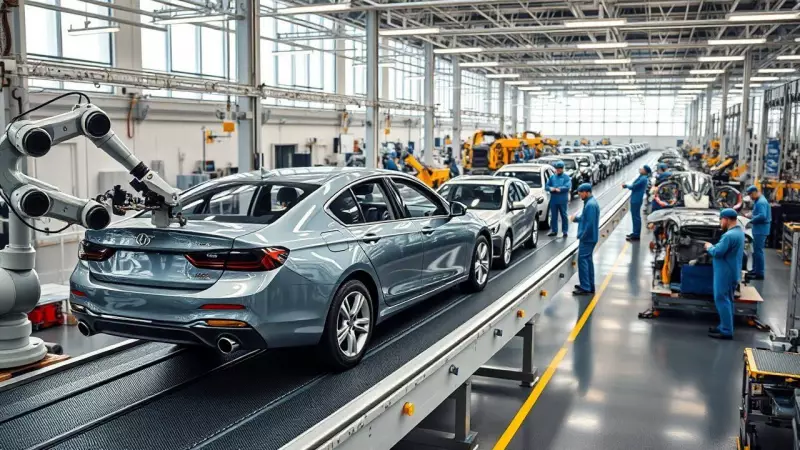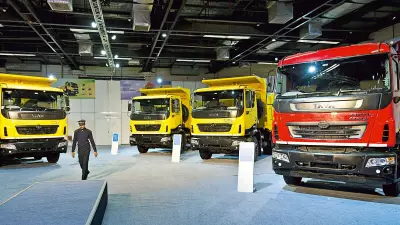
India's automotive industry is witnessing a massive production ramp-up as top manufacturers respond to surging consumer demand following recent tax reductions. The country's leading car makers - Maruti Suzuki, Hyundai Motor India, and Tata Motors - are preparing to increase their output by 20-40% in the coming months, signaling a robust recovery in the automobile sector.
Record Production Plans Across Major Manufacturers
Maruti Suzuki, India's largest car manufacturer, is planning an extraordinary production push with over 200,000 vehicles scheduled for November. This represents a significant jump from their average monthly production of 172,000 units until September. According to industry sources familiar with the company's plans, this production level will set a new record for November, a month that typically sees reduced dispatches following the festive season rush.
Tata Motors has instructed its supplier network to prepare for monthly outputs of 65,000-70,000 vehicles, marking a substantial increase from the average 47,000 units produced during the first half of the fiscal year. This represents approximately a 40% production hike for the homegrown automotive giant.
Meanwhile, Hyundai Motor India has implemented significant operational changes at its manufacturing facilities. The company has begun operating two shifts at its second plant located in Talegaon, Maharashtra, resulting in up to 20% additional production capacity.
Festive Season and GST Benefits Drive Unprecedented Demand
The production surge comes on the heels of record-breaking passenger vehicle sales in October, which reached an unprecedented 557,373 units. This sales explosion was fueled by combined factors of festive-season purchasing enthusiasm and price benefits following the Goods and Services Tax (GST) reductions, which have substantially depleted dealership inventories across the country.
Maruti Suzuki's retail performance alone demonstrated remarkable growth, jumping 20% to 242,096 units last month. Partho Banerjee, Senior Executive Officer for Marketing and Sales at Maruti Suzuki, revealed that the company entered November with 104,000 vehicles in stock - sufficient for approximately 19 days of sales - and an impressive 350,000 pending customer orders.
"Our production teams are working overtime, even on a few Sundays, to maximise supplies and reduce wait time," Banerjee stated, highlighting the company's commitment to meeting customer demand.
Industry Leaders Express Optimism About Sustained Growth
Executives from all three automotive giants expressed strong optimism about the current market momentum and future prospects. Tarun Garg, Chief Operating Officer at Hyundai Motor India, emphasized the transformative impact of the GST cuts on sales performance.
"We were constrained by capacity earlier. But now with the Pune plant coming in, we should see an upside in production by 20%," Garg told Economic Times, adding that the company plans to strengthen its market position through new product introductions and additional manufacturing capacity.
Tata Motors echoed this positive outlook. Amit Kamat, Chief Commercial Officer for Tata Motors Passenger Vehicles, noted that the festive season has "brought strong momentum to our retail performance, supported by healthy network stock levels and the positive impact of GST benefits." He confirmed that the company anticipates continued growth throughout the second half of the fiscal year, supported by a robust order book and upcoming vehicle launches.
Maruti Suzuki's management reinforced this optimistic perspective during their recent post-earnings call, projecting a 6% increase in industry sales during the second half of FY26. This forecast follows a 1% decline recorded in the first half of the fiscal year.
Revised Industry Outlook for 2025-2026
According to S&P Global Mobility, which monitors vehicle production and sales on a calendar-year basis, India's automotive market outlook for 2025 remains stable despite temporary disruptions caused by the timing of the GST rate reduction. The firm expects the recent demand surge to compensate for earlier slowdowns and extend well into the next year.
Gaurav Vangaal, Associate Director for Light Vehicles in the India subcontinent at S&P Global Mobility, provided insight into revised production expectations. "Before the tax cuts, vehicle production was expected to rise 1-2% in 2026. We now feel this would be much higher at 6-7%," Vangaal told Economic Times.
Supporting this positive trend, data from the Society of Indian Automobile Manufacturers (SIAM) reveals that production of cars, sedans, and utility vehicles in India increased 3.8% to 2.57 million units during the first six months of the current fiscal year. Simultaneously, exports demonstrated even stronger growth, surging 18% to 445,884 units, although domestic wholesales experienced a slight 1.4% decline.
The automotive industry's robust response to improved market conditions signals a strong recovery trajectory for one of India's most important manufacturing sectors, with production expansions expected to generate significant economic benefits through increased employment and industrial activity.





